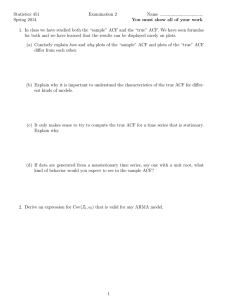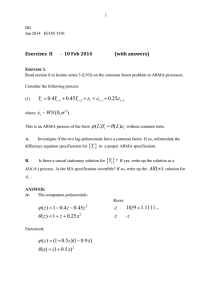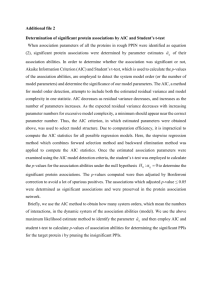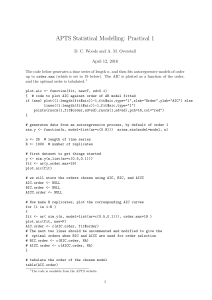Statistics 451 Examination 2 Name Spring 2013
advertisement
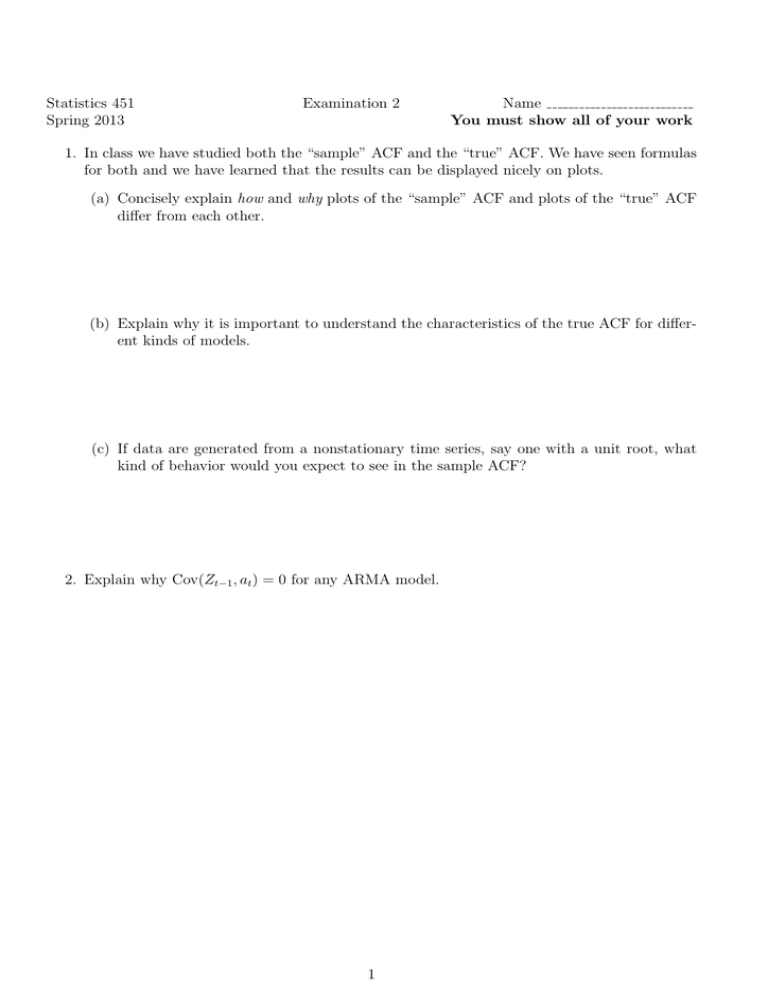
Statistics 451 Spring 2013 Examination 2 Name You must show all of your work 1. In class we have studied both the “sample” ACF and the “true” ACF. We have seen formulas for both and we have learned that the results can be displayed nicely on plots. (a) Concisely explain how and why plots of the “sample” ACF and plots of the “true” ACF differ from each other. (b) Explain why it is important to understand the characteristics of the true ACF for different kinds of models. (c) If data are generated from a nonstationary time series, say one with a unit root, what kind of behavior would you expect to see in the sample ACF? 2. Explain why Cov(Zt−1 , at ) = 0 for any ARMA model. 1 3. Derive an expression for Cov(Zt , at ) that is valid for any ARMA model. 4. Consider the model (1 − 0.5B)(1 − B)Zt = at . Compute the roots of the model-defining polynomials in B and use them to check if the model is stationary or not. 5. Solving the AR(2) Yule for φ1 and φ2 gives φ1 = ρ1 (1 − ρ2 )/(1 − ρ21 ) φ2 = (ρ2 − ρ21 )/(1 − ρ21 ). (a) What are some applications for these two equations? (b) Explain how and why the equation for φ2 related to the computational formula equation for φ22 ? 6. The AR(1) model can be expressed as Zt = θ0 + φ1 Zt−1 + at Derive an expression for the mean (expected value of) Zt . 2 7. The AIC model-choice criterion uses the statistic AIC = −2 log(Likelihood) + 2m where m is the number of estimated parameters in the model. (a) Using this definition of AIC, would you tend to choose a model with larger AIC or smaller AIC? Why? (b) What is the rational for the 2m term in this criterion? (c) Why is AIC a better criterion than choosing the model with the largest likelihood? (d) Suppose that you are comparing two models, both with the same transformation. Explain why you might not choose the model with the smallest AIC value? 8. Some text books make a statement like “at least 60 observations are needed in order to apply the Box Jenkins methods.” (a) List some of the reasons why it is important to have a sufficiently large number of observations to do a time series analysis. (b) It could be argued that that the above statement is overly simplistic. Depending on the situation, either more or fewer observations might be needed. Explain. 3 9. Assume that Zt = θ0 + at , at ∼ nid(0, σa2 ), and that Wt = (1 − B)Zt . (a) Write the model for the working series Wt . (b) Is the model for Wt invertible or not? Explain why or why not? (c) Derive an expression for the mean of Wt . (d) Derive an expression for the the variance of Wt . (e) Is Wt stationary or not. Explain why or why not. 4
